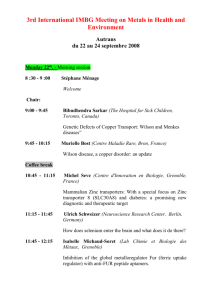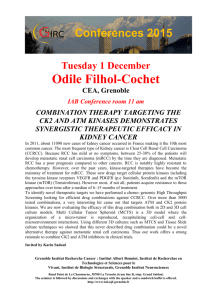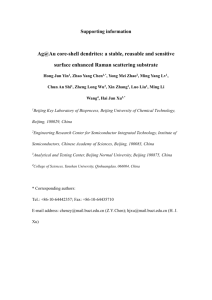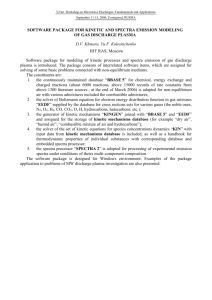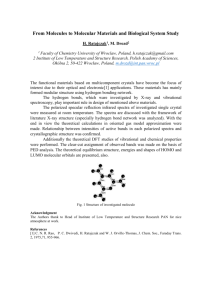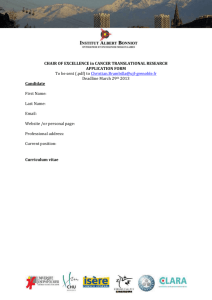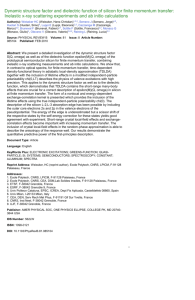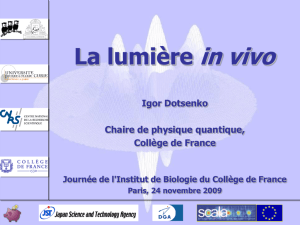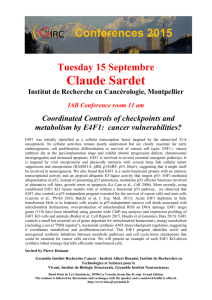Crystallization of Amphipol-Trapped Membrane Proteins: A Case of
advertisement
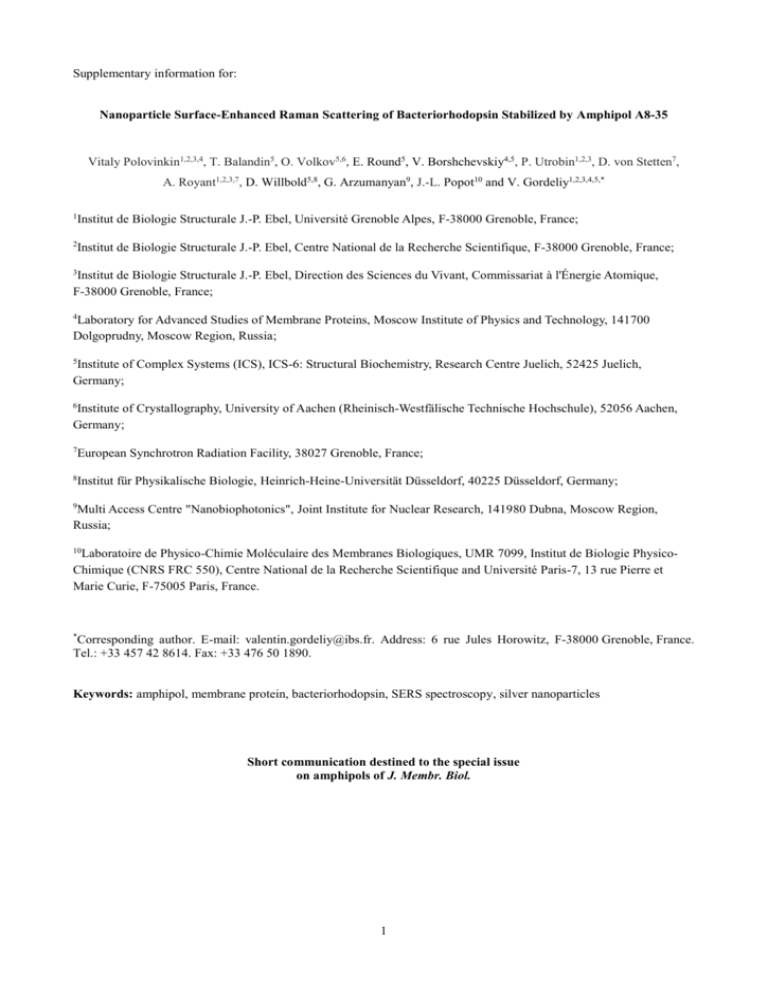
Supplementary information for: Nanoparticle Surface-Enhanced Raman Scattering of Bacteriorhodopsin Stabilized by Amphipol A8-35 Vitaly Polovinkin1,2,3,4, T. Balandin5, O. Volkov5,6, E. Round5, V. Borshchevskiy4,5, P. Utrobin1,2,3, D. von Stetten7, A. Royant1,2,3,7, D. Willbold5,8, G. Arzumanyan9, J.-L. Popot10 and V. Gordeliy1,2,3,4,5,* 1 Institut de Biologie Structurale J.-P. Ebel, Université Grenoble Alpes, F-38000 Grenoble, France; 2 Institut de Biologie Structurale J.-P. Ebel, Centre National de la Recherche Scientifique, F-38000 Grenoble, France; 3 Institut de Biologie Structurale J.-P. Ebel, Direction des Sciences du Vivant, Commissariat à l'Énergie Atomique, F-38000 Grenoble, France; 4 Laboratory for Advanced Studies of Membrane Proteins, Moscow Institute of Physics and Technology, 141700 Dolgoprudny, Moscow Region, Russia; 5 Institute of Complex Systems (ICS), ICS-6: Structural Biochemistry, Research Centre Juelich, 52425 Juelich, Germany; 6 Institute of Crystallography, University of Aachen (Rheinisch-Westfälische Technische Hochschule), 52056 Aachen, Germany; 7 European Synchrotron Radiation Facility, 38027 Grenoble, France; 8 Institut für Physikalische Biologie, Heinrich-Heine-Universität Düsseldorf, 40225 Düsseldorf, Germany; 9 Multi Access Centre "Nanobiophotonics", Joint Institute for Nuclear Research, 141980 Dubna, Moscow Region, Russia; 10 Laboratoire de Physico-Chimie Moléculaire des Membranes Biologiques, UMR 7099, Institut de Biologie PhysicoChimique (CNRS FRC 550), Centre National de la Recherche Scientifique and Université Paris-7, 13 rue Pierre et Marie Curie, F-75005 Paris, France. * Corresponding author. E-mail: valentin.gordeliy@ibs.fr. Address: 6 rue Jules Horowitz, F-38000 Grenoble, France. Tel.: +33 457 42 8614. Fax: +33 476 50 1890. Keywords: amphipol, membrane protein, bacteriorhodopsin, SERS spectroscopy, silver nanoparticles Short communication destined to the special issue on amphipols of J. Membr. Biol. 1 Figure S1 a. A bright-field optical image of the dried mixture of BR/A8-35 complexes and silver NPs (5-µL drop at a BR concentration of 0.08 g·L-1), which was used to measure SERS spectra of BR/A8-35. This image is the same image as presented in Fig. 3a of the main text. b. Scaled UV-visible absorption spectrum of Lee-Meisel Ag NP colloid solution used for SERS experiments in the present work is drawn as a black line. The silver colloid has an absorption maximum at ~405 nm with a FWHH of ~102 nm. This spectrum was measured with a spectrophotometer UV2450 (Shimadzu, Japan). Spectra 1 (red line), 2 (blue line), 3 (green line) and 4 (yellow line) are UV-visible spectra recorded from the areas of the dried drop in Panel a, marked by red spots with corresponding numbers. This variation of UVvisible absorption spectrum along the dried drop is caused mainly by the non-uniform aggregation of Ag NPs upon drying, since the aggregation of Ag NPs nanoparticles is accompanied by shifts to longer wavelengths and broadening of plasmon resonance peak (Félidj et al. 1999; Wang et al. 2008). Spectra 1 to 4 were recorded on a UV-visible absorption microspectrophotometer, equipped with an Ocean Optics QE65 Pro spectrometer (Dunedin, FL), and an optical system with a focal spot size of about 25-µm diameter (using 100-µm fibres) at the sample position. This setup has been described in detail by Royant et al. (2007). 2 Figure S2 Resonance Raman spectra of BR/A8-35 complexes (3 g·L-1 BR) in 20 mM Na/K-Pi, pH 7.2 (blue line) and BR in purple membranes (7 g·L-1 BR) in 20 mM Na/K-Pi, pH 7.2 (red line). Spectra were collected at a laser wavelength of 514.5 nm, an exposure time of 30 s and 1-mW laser power. 3 References Félidj N, Aubard J, Lévi G (1999) Discrete dipole approximation for ultraviolet–visible extinction spectra simulation of silver and gold colloids. J Chem Phys 111:1195–1208 Royant A, Carpentier P, Ohana J, McGeehan J, Paetzold B, Noirclerc-Savoye M, Vernède X, Adam V, Bourgeois D (2007) Advances in spectroscopic methods for biological crystals. 1. Fluorescence lifetime measurements. J Appl Crystallogr 40:1105–1112 Wang ZB, Luk’yanchuk BS, Guo W, Edwardson SP, Whitehead DJ, Li L, Liu Z, Watkins KG (2008) The influences of particle number on hot spots in strongly coupled metal nanoparticles chain. J Chem Phys 128:094705 4
